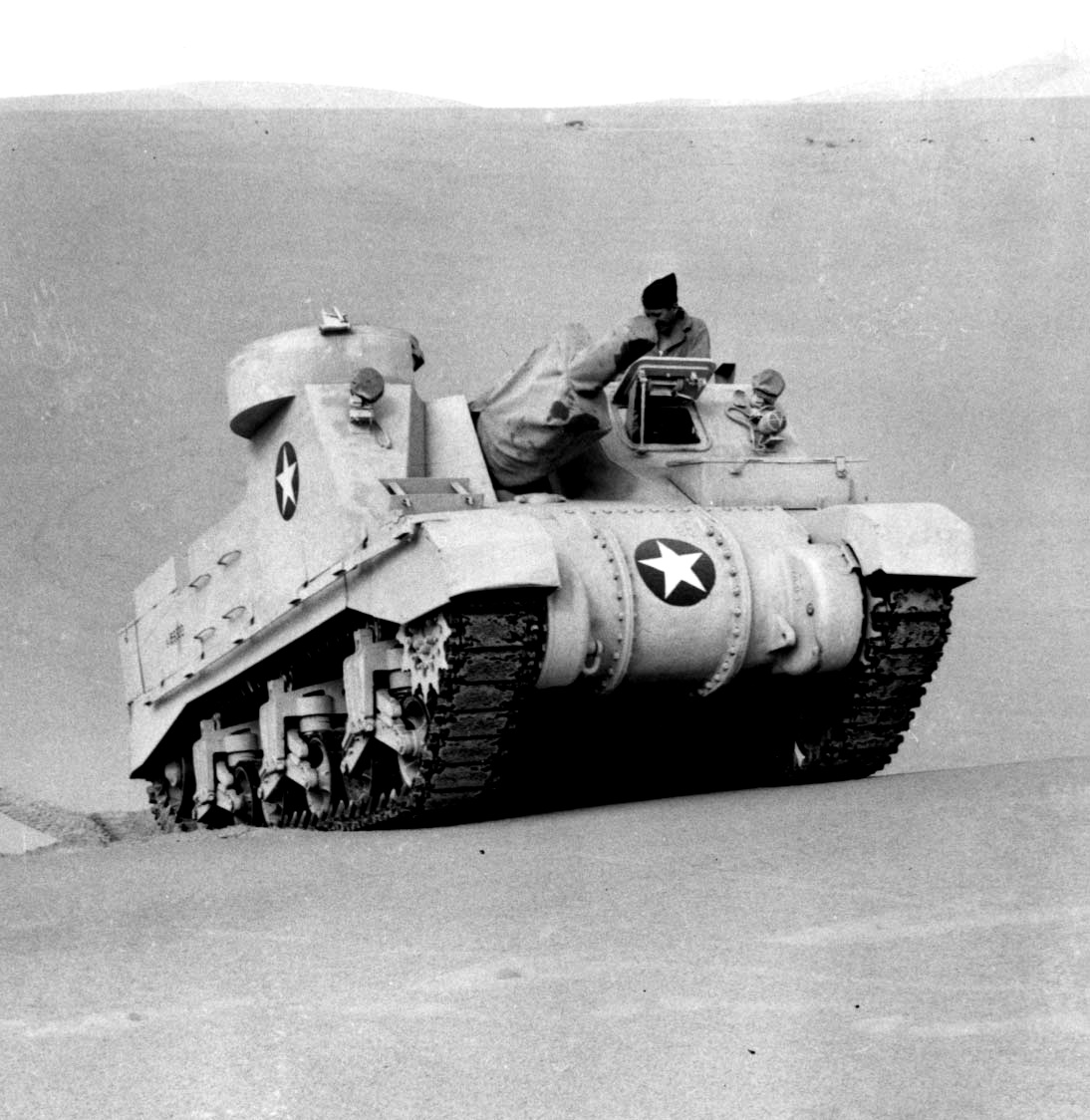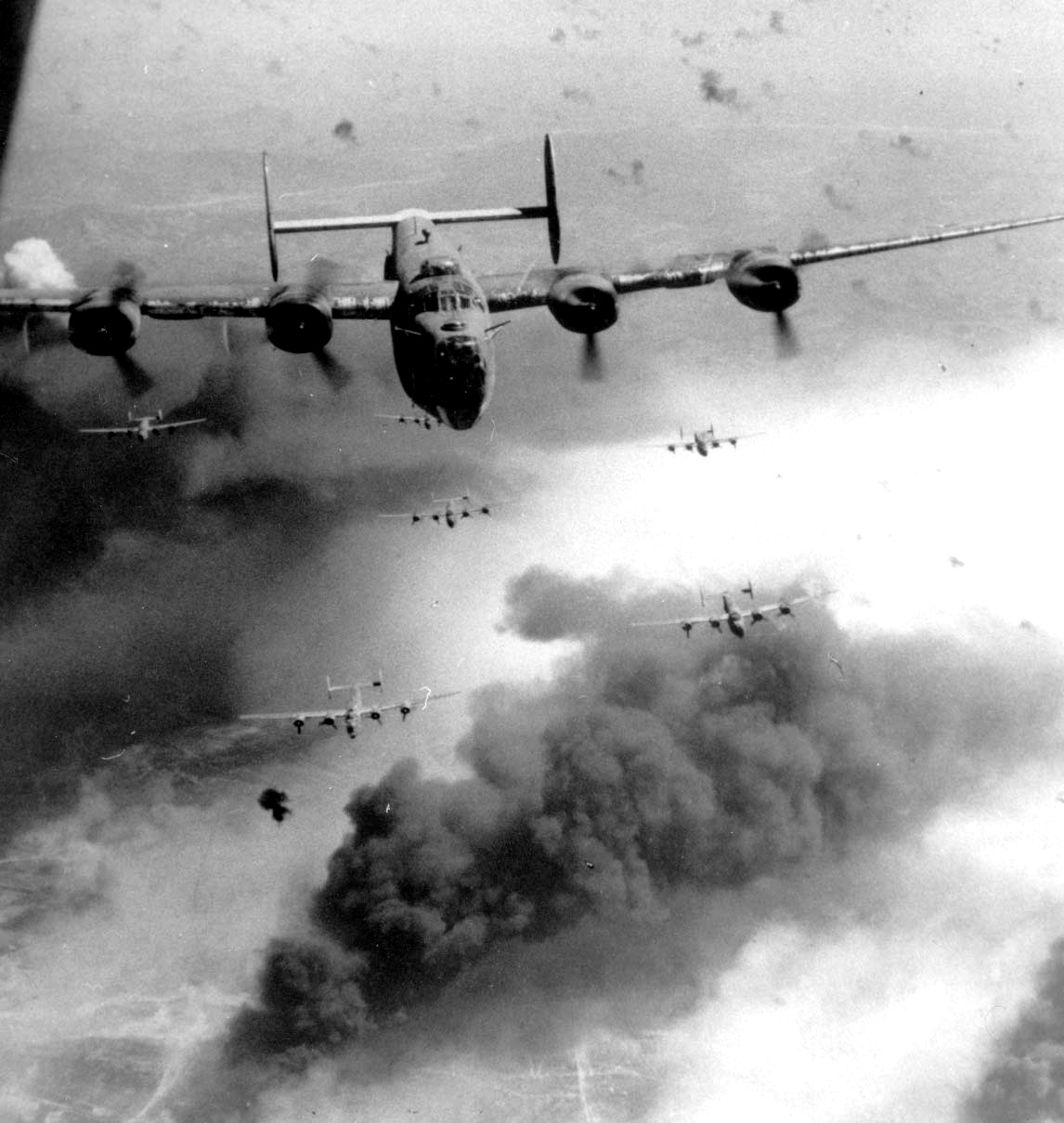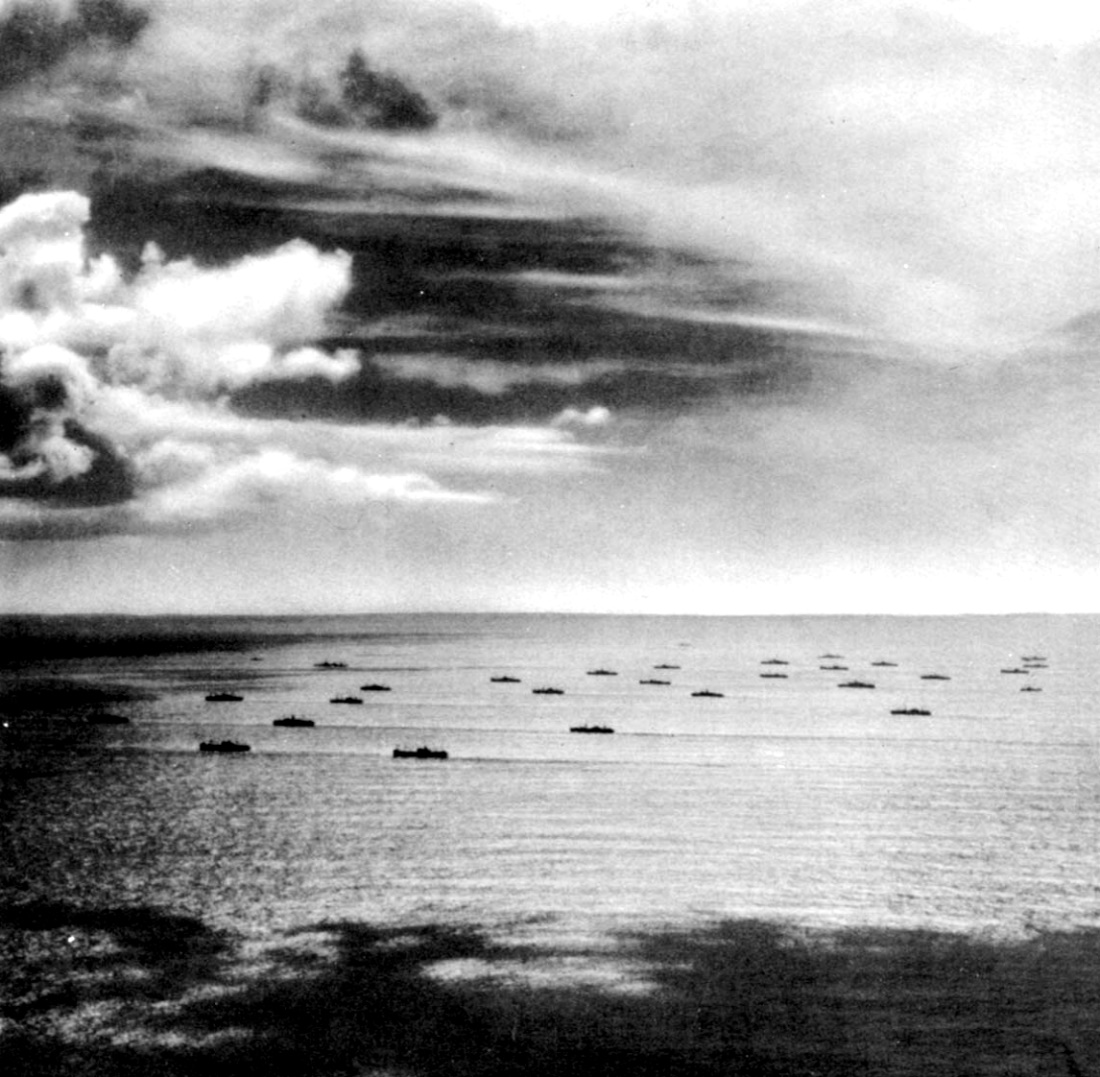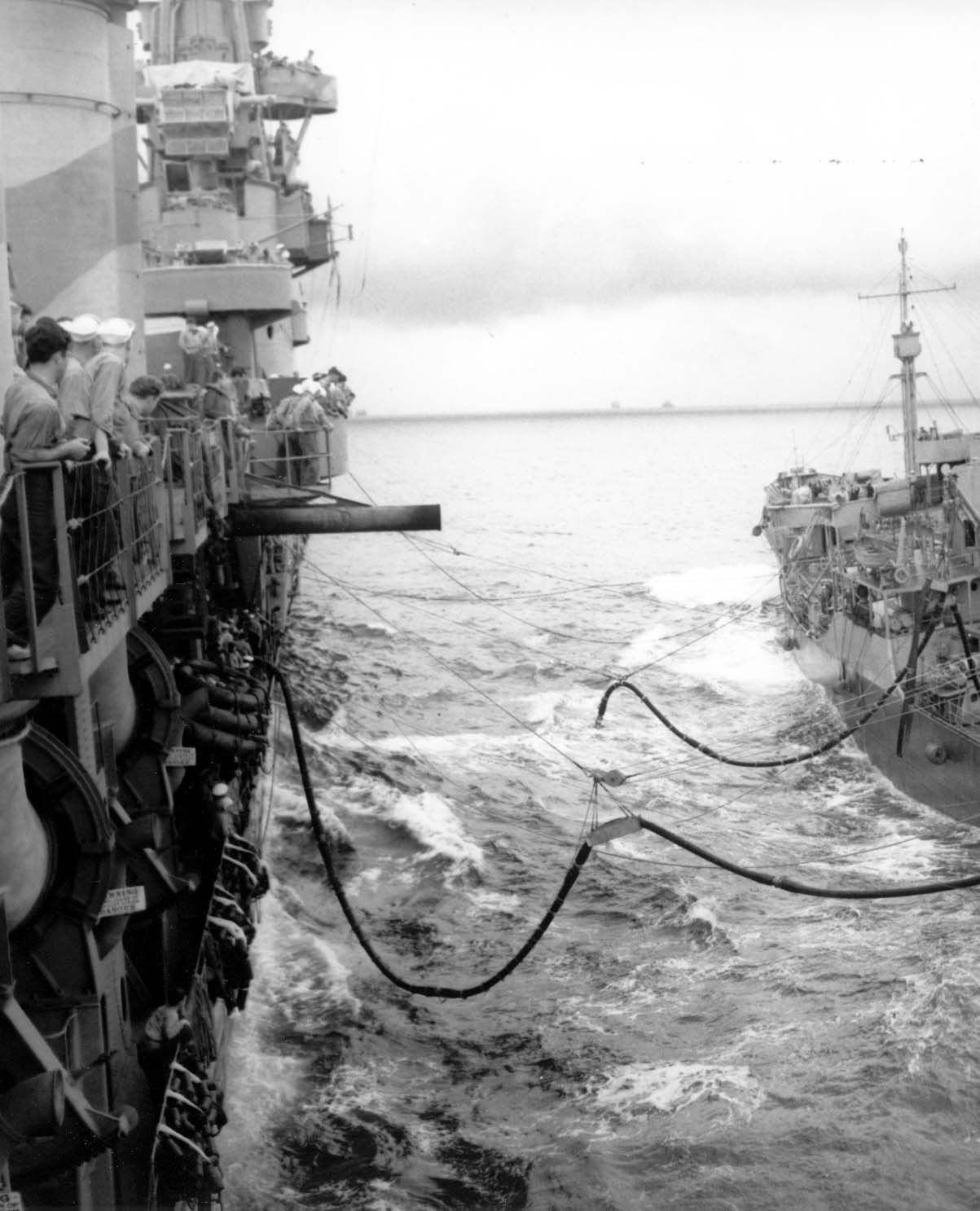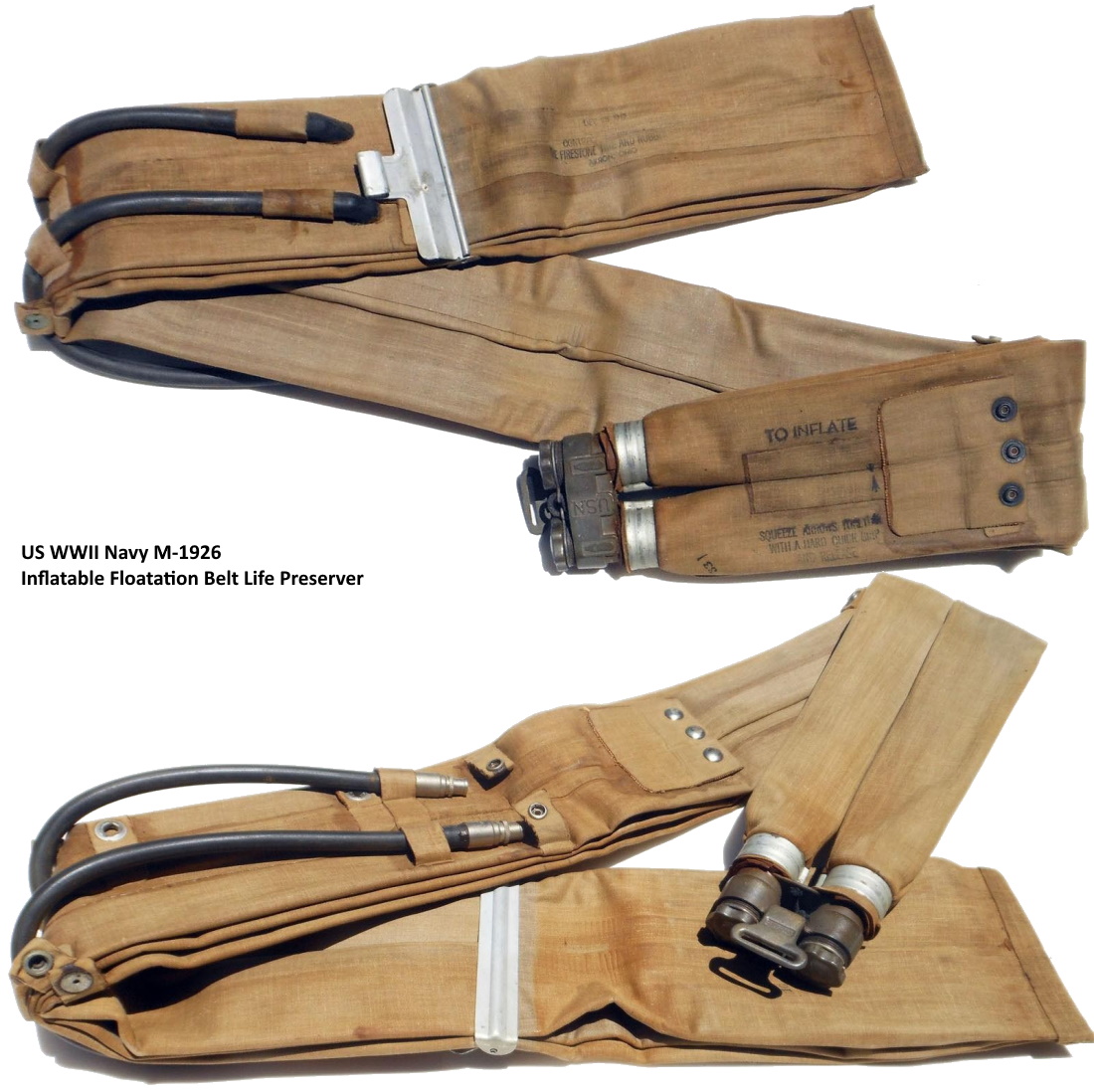Self-Propelled Howitzer nicknamed the Priest. The crisis which developed when the British were forced to retreat to the El Alamein Line threatened the Suez Canal as well as the Allied air routes to Russia and India. Reinforcements and equipment were rushed to Egypt from the United Kingdom and the United States. The United States sent about 90 of the guns shown above, more than 300 General Sherman M-4s, and a large number of trucks. By October 1942, the situation had improved. The British Eighth Army attacked El Alamein and drove the enemy out of Egypt, through Libya, and into Tunisia. (105-MM howitzer, M-7 Howitzer Motor Carriage)
Liberators Bombing Ploesti Oil Field installations in Romania. The first USAAF mission flown against any strategic target in Europe was on the Ploesti Oil Fields, a twelve-bomber raid by B–24’s from Egypt on June 12, 1942. The next raid on this target, August 1, 1943, was a low-level attack by 177 Liberators from Bengasi in Libya with the loss of 54 bombers. Refinery production was interrupted by these raids from Africa but was not stopped until the spring of 1944 when continuous large-scale attacks were carried out from bases in Italy. (Heavy Bomber Consolidated B–24 Liberator)
Convoy Bound for North Africa. Troops in the first landings approached their destinations in several large convoys, escorted by aircraft carriers and other warships. The convoy to Morocco originated in several ports of the United States on October 23, 1942, and when near the African coast separated into three major parts. The convoy steaming to the vicinity of Oran and Algiers left the United Kingdom on October 26. Before passing through the Straits of Gibraltar it separated into two parts. Inside the Mediterranean, the two sections overtook slower cargo convoys and continued on a course toward Malta until sundown of November 7. That night each section wheeled southward and separated further to reach several landing points near Oran and Algiers. Other convoys had already left both the United States and the United Kingdom before the attacks began.
US Navy Fighter Aircraft on the flight deck of a carrier approaching the coast of North Africa. In the background is a destroyer escort. Two to four destroyers operated with each carrier, providing antisubmarine protection, picking up personnel from wrecked aircraft, and augmenting the antiaircraft screen around their charge. (Grumman F-4F Wildcat single seater, carrier fighters)
Oil Tanker refueling aircraft carrier en route to North Africa.
Gunnery Practice Aboard a Transport. Submarines were a danger and gun crews were constantly on the alert. (Left, US Navy 3-inch gun; right .50-caliber water-cooled Browning machine gun)
Troops on Transport Headed for French Morocco. Note rubber life belts on most men. These could be inflated instantly by means of gas cartridges in belts. In practice, it was found that a fully inflated belt was not capable of supporting a soldier loaded down with his equipment. Men who found themselves in the water could not readily get rid of their packs and ammunition belts and several drownings occurred during the landings



